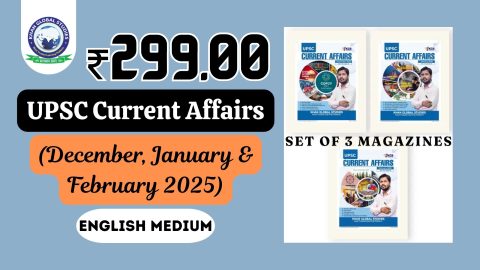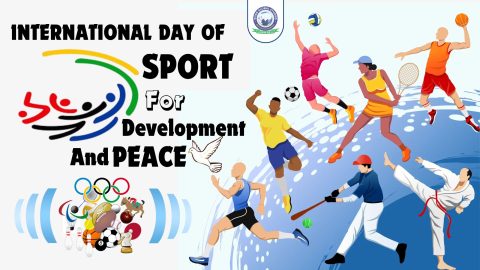India was the first country in the world to launch a national program for family planning in 1952. Over the past decades, the program has changed in terms of policy and actual program implementation and is currently being redesigned to achieve population stabilization goals. but also promotes reproductive health and reduces maternal, infant, and child mortality and morbidity.
Background of Family Planning in India
- In 1952, India became the first country in the world to launch a national program for family planning.
- Since its inception in 1952, this program has undergone significant policy and programmatic changes.
- In 1966 the Ministry of Health established a separate department for family planning.
- The Janata Government issued a new population policy under which recruitment was banned in 1977.
- Acceptance of the program was completely voluntary. Furthermore, the Janata government changed the name of the Family Planning Department to the Family Welfare Department.
- The Sixth Five Year Plan (1980–85) outlined the long-term demographic target of achieving a National Net Reproduction Rate (NRR) in each state by 1996 and 2001.
- In the first five-year plan, these programs received funding of only Rs 0.1 crore. In the Eleventh Five Year Plan, this was increased to Rs 6.3 crore and merged with health.
- Family planning programs in India are currently being reorganized not only to meet the objectives of population stabilization but also to support reproductive health, and lower maternal, infant and child mortality and morbidity rates.
- It has been a top priority for the Government of India with the National Population Policy, 2000 and the National Rural Health Mission launched in 2005 to implement the policy framework for population stabilization.
- The primary goal of the National Population Policy 2000 is to address unmet contraceptive needs and achieve a stable population by 2045.
- Furthermore, it emphasizes sustainable economic growth, social development and environmental protection at a level consistent with these needs.
Factors Affecting Population Growth
The factors affecting population growth can be divided into the following 3 categories-
- Unmet need for Family Planning: This includes currently married women who want to stop having children or wait for the next two or more years to have their next child, but are not using any contraceptive method. The total unmet need for family planning in our country is 9.4 (NFHS-V).
- Age at Marriage and First Delivery: 23.3% (NFHS-V) of girls in India are married before the age of 18 and 6.8% of total deliveries occur among adolescents i.e. between 15-19 years. The situation regarding the marriageable age of girls is more worrying in some states like Bihar (40.8%), Rajasthan (25.4%), Jharkhand (32.2%), UP (15.8%), and MP (23.1%). Delaying the age of marriage and the birth of the first child can reduce the impact of population mobility on population growth.
- Spacing between Births: A healthy gap of 3 years improves the chances of children’s survival and helps reduce the impact of population dynamics on population growth. SRS 2020 data shows that in 47.6% of births in India, the gap between two children is less than the recommended period of 3 years.
Total Fertility Rate (TFR)
The Total Fertility Rate (TFR) in the country has witnessed a steady decline and currently stands at 2.0 (SRS 2020):
| Year | Total Fertility Rate (TFR) |
| 2005 | 2.9 |
| 2006 | 2.8 |
| 2007 | 2.7 |
| 2008 | 2.6 |
| 2009 | 2.6 |
| 2010 | 2.5 |
| 2011 | 2.4 |
| 2012 | 2.4 |
| 2013 | 2.3 |
| 2014 | 2.3 |
| 2015 | 2.3 |
| 2016 | 2.3 |
| 2017 | 2.2 |
| 2018 | 2.2 |
| 2019 | 2.1 |
| 2020 | 2.0 |
Need for Family Planning Program of India
The need for this programs in India is due to the following reasons:
- To reduce the heavy burden of population growth.
- Delaying marriage at an early age.
- Giving priority to the health of women and children.
- Ending female foeticide.
- Strengthening the public health sector.
- Increasing the gap between births.
- Limiting family size.
- Maintaining appropriate TFR levels.
- To reduce the birth rate conducive to the country’s socio-economic development and environmental protection.
- To reduce inequality and poverty in the society resulting from rapid population growth.
- To increase the country’s per capita income to meet the people’s rising living standards.
- To provide information to couples about government services available to assist in family planning.
Objectives of Family Planning Program in India
- Decrease in fertility and slowing population growth.
- Promoting late marriage.
- To reduce the infant mortality rate.
- To improve women’s health.
- For prevention of communicable diseases.
- To provide information and guidance about family planning methods and services to eligible couples.
- To ensure that individuals and couples live healthy, happy and prosperous lives.
- Mass Media Campaigns have the potential to provide useful information about the benefits of family planning programs.
Features of Family Planning Programs in India
- Ensuring Birth Spacing (ESB).
- Increasing male participation and promoting non-scalable vasectomy.
- To improve contraceptive supply management up to the peripheral facilities level.
- Ensuring delivery of Pregnancy Test Kits (PTK).
- To provide home delivery of contraceptives (HDC) through ASHA workers.
- To promote new interventions to improve access to contraception.
- Assuring family planning services.
- Greater emphasis on postnatal family planning (PPFP) services.
- Emphasis on differential methods such as intrauterine contraceptive devices (IUCDs).
- To compensate beneficiaries for complications and even death of sterilization in public and non-profit centers under the Family Planning Insurance Scheme.
Conclusion
The family planning program in India is free and voluntary, and it is the prerogative of the citizens to choose the birth planning method most suitable for them, based on their reproductive rights. India is now celebrating the success of its program as policymakers, researchers, service providers and users all work together to ensure equitable access to quality family planning services.
FAQs
Question: What is the Family Planning Program?
Answer: Controlling the number of children and the interval between their births, especially through contraception or voluntary sterilization.
Question: When was India’s Family Planning Program started?
Answer: A national program for family planning was first launched in India in 1952, making it the first in the world. Since its inception in 1952, the family planning program has undergone significant policy and programmatic changes.






this is a good blog i am a repeat reader good work done over all these years